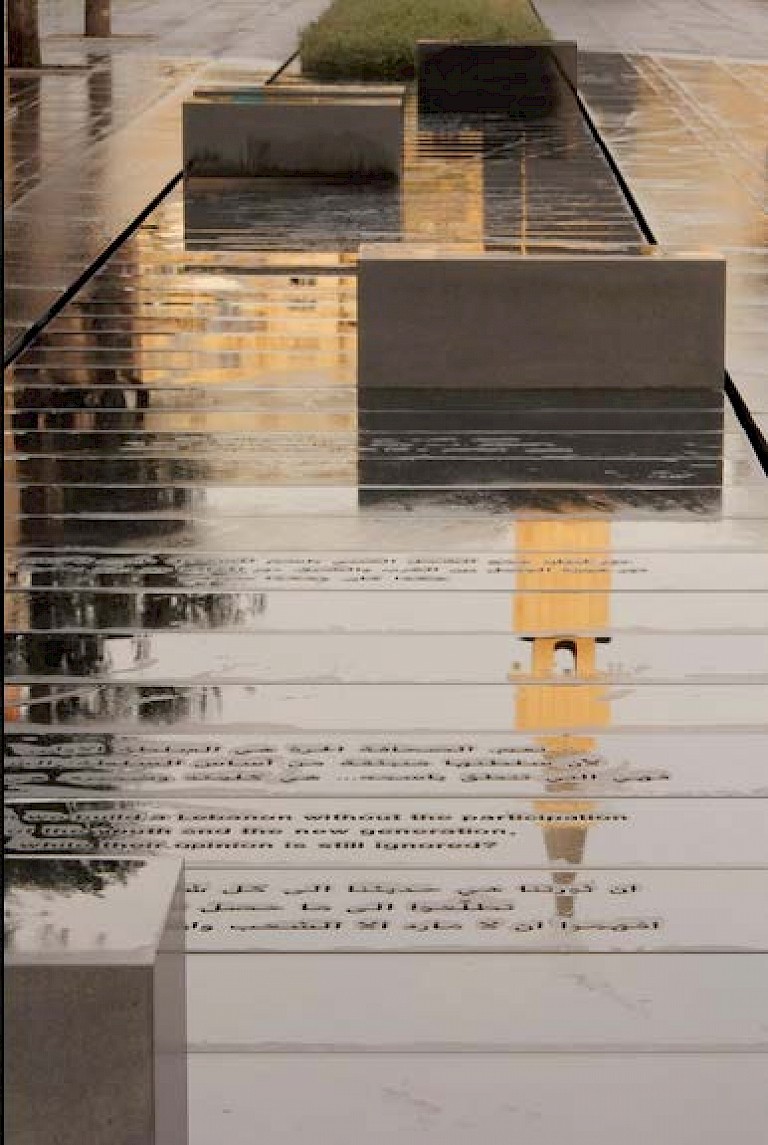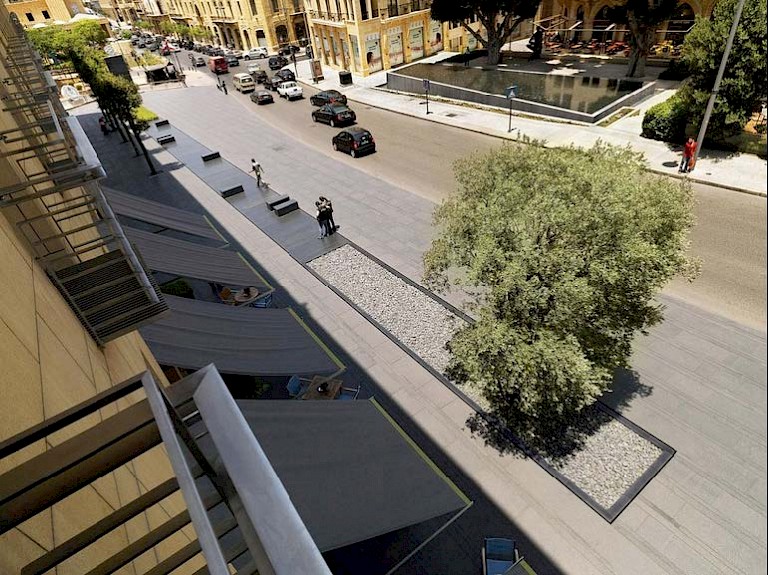



Instead of using a traditional representation of the man as monument, Djurovic decided to invite the public into the effect of the personality through multiple symbolic dimensions, curated in a seamless landscape. A single linear column, created of granite bands 15, 9 and 57 cm wide (his birthday being 15/9/1957) lies on the floor etched with many of his most famous statements and oaths. The plantation lining the memorial are all species indigenous to Lebanon. Passers-by are invited to take pebbles engraved with his name, constantly replenished by his old colleagues at the newspaper he worked at signifying an act of constant remembrance on their part.
The boldness through which the artist has insistently created the memorial devoid of full physical representation of the subject, without sculpturally mentioning him in visage or shape, presents a relatively new manner in which the public can interact with the contemporary presence of Tueni’s legacy. Instead of remaining a memory external to public interaction, every part of the memorial exhibits truly public values, namely its practical use as a walkway. The artist has also allowed for the public to interact with the memorial even subconsciously, as they walk past, over and through the memorial, it represents the subject’s presence in Lebanon’s society whether that society remember him actively or passively.
As a landscape memorial, particular recognition should be given to the manner in which the artist has reflected the very public personality and persona of Tueni. The font used for the recognition of Tueni’s words, how the majority of the public interacted with him in his life, is clear cut, in multiple languages, and illuminated at night, always available for the public. This is also symbolic of the fact that Tueni’s newspaper was named An Nahar, meaning ‘The Day’, and particular cultural reference was made during Tueni’s life of the idea of this daylight, and hope, never being extinguished. The choice of materials used provide a subtle yet resonant display; the strength of the granite, merged with the fragile beauty of the trees lining them, provides the element of timelessness that renders this memorial truly fit for praise.
Tueni was known for his patriotism and for his words, either through his inspiring speeches or in the written form. The memorial fittingly highlights both of these elements in abundance.
All copyright belongs to Shanghai Academy of Fine Arts, Shanghai University.



